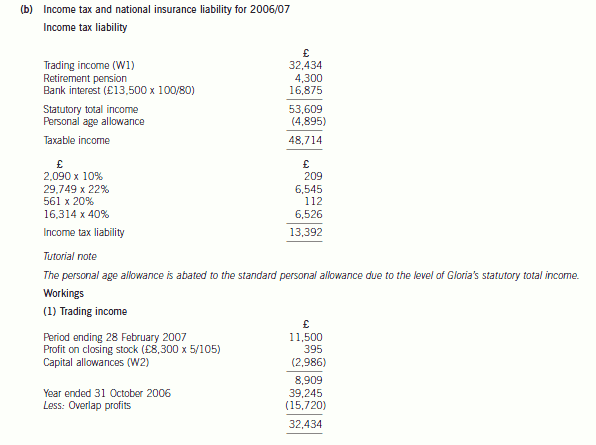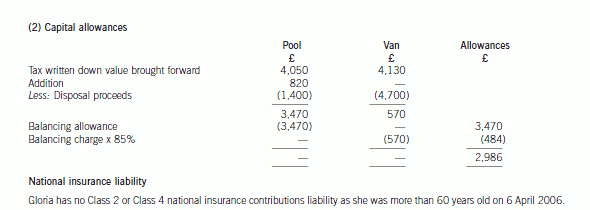ACCA F2知识点:直接歧视 Direct discrimination
发布时间:2021-02-14
ACCA考试中直接歧视和间接歧视析一直是ACCA考生最为头疼的知识点,接下来就和51题库考试学习网一起去了解下吧!
直接歧视 Direct discrimination
直接歧视,指因为性别、年龄、宗教信仰、性别取向、种族、国籍(direct discrimination,indirect discrimination,victimization,harassment,positive discrimination), 某个群体比另一个群体更受到更大的青睐。并且别人把这种偏爱,明摆着写出来或告诉你。
间接歧视
Indirect discrimination
间接歧视,指一种一项政策或做法在形式上是公平的,但实际上它暗含着歧视。
举个题目中常见的例子:企业不招兼职工。这样看上去没什么问题,企业招不招兼职是由企业说了算!但是我们要结合一下西方社会的社会背景来考虑:在西方,女性生了孩子之后,家里的长辈不会像大部分中国的爷爷奶奶帮忙照顾孩子,妈妈们要自己照顾孩子。在这种情况下,她们很难兼顾一份全职工作,只能去做兼职,所以在西方,兼职工大部分都是女性。企业说,不愿意招兼职,那可能就是暗含着不愿意招女性,是间接的性别歧视。
以上就是51题库考试学习网给大家分享的全部信息,希望能够帮到大家!后续请持续关注51题库考试学习网,51题库考试学习网将会为大家持续更新最新、最热的考试资讯!
下面小编为大家准备了 ACCA考试 的相关考题,供大家学习参考。
3 An organisation has decided to compare the benefits of promoting existing staff with those of appointing external
candidates and to assess whether the use of external recruitment consultants is appropriate.
Required:
(a) Describe the advantages of internal promotion. (5 marks)
3 All organisations rely upon their staff for success. However, recruitment of staff can be time consuming; a drain on resources and the necessary expertise may not exist within the organisation.
(a) Internal promotion describes the situation where an organisation has an explicit policy to promote from within and where there is a clear and transparent career structure. This is typical of many professional bodies, large organisations and public services.
The advantages of internal promotion are that it acts as a source of motivation, provides good general morale amongst employees and illustrates the organisation’s commitment to encouraging advancement. Recruitment is expensive and internal promotion is relatively inexpensive in terms of time, money and induction costs and since staff seeking promotion are known to the employer, training costs are minimised. Finally, the culture of the organisation is better understood by the individual.
A manufacturing company, Man Co, has two divisions: Division L and Division M. Both divisions make a single standardised product. Division L makes component L, which is supplied to both Division M and external customers.
Division M makes product M using one unit of component L and other materials. It then sells the completed
product M to external customers. To date, Division M has always bought component L from Division L.
The following information is available:

Division L charges the same price for component L to both Division M and external customers. However, it does not incur the selling and distribution costs when transferring internally.
Division M has just been approached by a new supplier who has offered to supply it with component L for $37 per unit. Prior to this offer, the cheapest price which Division M could have bought component L for from outside the group was $42 per unit.
It is head office policy to let the divisions operate autonomously without interference at all.
Required:
(a) Calculate the incremental profit/(loss) per component for the group if Division M accepts the new supplier’s
offer and recommend how many components Division L should sell to Division M if group profits are to be
maximised. (3 marks)
(b) Using the quantities calculated in (a) and the current transfer price, calculate the total annual profits of each division and the group as a whole. (6 marks)
(c) Discuss the problems which will arise if the transfer price remains unchanged and advise the divisions on a suitable alternative transfer price for component L. (6 marks)
(a)MaximisinggroupprofitDivisionLhasenoughcapacitytosupplybothDivisionManditsexternalcustomerswithcomponentL.Therefore,incrementalcostofDivisionMbuyingexternallyisasfollows:CostperunitofcomponentLwhenboughtfromexternalsupplier:$37CostperunitforDivisionLofmakingcomponentL:$20.ThereforeincrementalcosttogroupofeachunitofcomponentLbeingboughtinbyDivisionMratherthantransferredinternally:$17($37–20).Fromthegroup’spointofview,themostprofitablecourseofactionisthereforethatall120,000unitsofcomponentLshouldbetransferredinternally.(b)CalculatingtotalgroupprofitTotalgroupprofitswillbeasfollows:DivisionL:Contributionearnedpertransferredcomponent=$40–$20=$20Profitearnedpercomponentsoldexternally=$40–$24=$16(c)ProblemswithcurrenttransferpriceandsuggestedalternativeTheproblemisthatthecurrenttransferpriceof$40perunitisnowtoohigh.Whilstthishasnotbeenaproblembeforesinceexternalsupplierswerecharging$42perunit,itisaproblemnowthatDivisionMhasbeenofferedcomponentLfor$37perunit.IfDivisionMnowactsinitsowninterestsratherthantheinterestsofthegroupasawhole,itwillbuycomponentLfromtheexternalsupplierratherthanfromDivisionL.ThiswillmeanthattheprofitsofthegroupwillfallsubstantiallyandDivisionLwillhavesignificantunusedcapacity.Consequently,DivisionLneedstoreduceitsprice.Thecurrentpricedoesnotreflectthefactthattherearenosellinganddistributioncostsassociatedwithtransferringinternally,i.e.thecostofsellinginternallyis$4lessforDivisionLthansellingexternally.So,itcouldreducethepriceto$36andstillmakethesameprofitonthesesalesasonitsexternalsales.ThiswouldthereforebethesuggestedtransferpricesothatDivisionMisstillsaving$1perunitcomparedtotheexternalprice.Atransferpriceof$37wouldalsopresumablybeacceptabletoDivisionMsincethisisthesameastheexternalsupplierisoffering.
(b) Compute Gloria’s total income tax and national insurance liability for 2006/07. (7 marks)


(b) (i) Explain the matters you should consider, and the evidence you would expect to find in respect of the
carrying value of the cost of investment of Dylan Co in the financial statements of Rosie Co; and
(7 marks)
(b) (i) Cost of investment on acquisition of Dylan Co
Matters to consider
According to the schedule provided by the client, the cost of investment comprises three elements. One matter to
consider is whether the cost of investment is complete.
It appears that no legal or professional fees have been included in the cost of investment (unless included within the
heading ‘cash consideration’). Directly attributable costs should be included per IFRS 3 Business Combinations, and
there is a risk that these costs may be expensed in error, leading to understatement of the investment.
The cash consideration of $2·5 million is the least problematical component. The only matter to consider is whether the
cash has actually been paid. Given that Dylan Co was acquired in the last month of the financial year it is possible that
the amount had not been paid before the year end, in which case the amount should be recognised as a current liability
on the statement of financial position (balance sheet). However, this seems unlikely given that normally control of an
acquired company only passes to the acquirer on cash payment.
IFRS 3 states that the cost of investment should be recognised at fair value, which means that deferred consideration
should be discounted to present value at the date of acquisition. If the consideration payable on 31 January 2009 has
not been discounted, the cost of investment, and the corresponding liability, will be overstated. It is possible that the
impact of discounting the $1·5 million payable one year after acquisition would be immaterial to the financial
statements, in which case it would be acceptable to leave the consideration at face value within the cost of investment.
Contingent consideration should be accrued if it is probable to be paid. Here the amount is payable if revenue growth
targets are achieved over the next four years. The auditor must therefore assess the probability of the targets being
achieved, using forecasts and projections of Maxwell Co’s revenue. Such information is inherently subjective, and could
have been manipulated, if prepared by the vendor of Maxwell Co, in order to secure the deal and maximise
consideration. Here it will be crucial to be sceptical when reviewing the forecasts, and the assumptions underlying the
data. The management of Rosie Co should have reached their own opinion on the probability of paying the contingent
consideration, but they may have relied heavily on information provided at the time of the acquisition.
Audit evidence
– Agreement of the monetary value and payment dates of the consideration per the client schedule to legal
documentation signed by vendor and acquirer.
– Agreement of $2·5 million paid to Rosie Co’s bank statement and cash book prior to year end. If payment occurs
after year end confirm that a current liability is recognised on the individual company and consolidated statement
of financial position (balance sheet).
– Board minutes approving the payment.
– Recomputation of discounting calculations applied to deferred and contingent consideration.
– Agreement that the discount rate used is pre-tax, and reflects current market assessment of the time value of money
(e.g. by comparison to Rosie Co’s weighted average cost of capital).
– Revenue and profit projections for the period until January 2012, checked for arithmetic accuracy.
– A review of assumptions used in the projections, and agreement that the assumptions are comparable with the
auditor’s understanding of Dylan Co’s business.
Tutorial note: As the scenario states that Chien & Co has audited Dylan Co for several years, it is reasonable to rely on
their cumulative knowledge and understanding of the business in auditing the revenue projections.
声明:本文内容由互联网用户自发贡献自行上传,本网站不拥有所有权,未作人工编辑处理,也不承担相关法律责任。如果您发现有涉嫌版权的内容,欢迎发送邮件至:contact@51tk.com 进行举报,并提供相关证据,工作人员会在5个工作日内联系你,一经查实,本站将立刻删除涉嫌侵权内容。
- 2020-10-15
- 2021-02-14
- 2020-10-11
- 2020-09-05
- 2020-10-11
- 2021-03-05
- 2020-10-18
- 2020-10-11
- 2021-02-14
- 2021-02-14
- 2020-10-18
- 2020-10-11
- 2021-02-14
- 2021-02-14
- 2020-10-15
- 2020-10-15
- 2020-10-15
- 2020-09-05
- 2020-10-11
- 2021-04-08
- 2019-06-29
- 2021-02-14
- 2020-09-05
- 2021-02-14
- 2021-02-14
- 2020-10-15
- 2020-10-11
- 2020-09-05
- 2021-02-14
- 2020-10-11